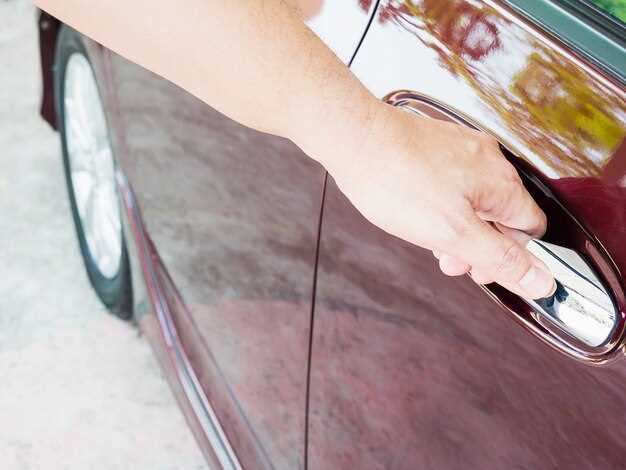

Tinting your car windows can provide numerous benefits, including enhanced privacy, protection from harmful UV rays, and improved aesthetic appeal. However, it’s crucial to understand the legal regulations governing window tinting in your area to avoid potential fines and penalties. Each state or country has specific laws regarding allowable tint levels, which can vary significantly.
In this guide, we will explore the essential aspects of tinting your car windows legally. From understanding the different types of window tint and their respective benefits to deciphering the legal limitations on visible light transmission, this article aims to equip you with the knowledge needed to make an informed decision. We will also highlight steps to ensure compliance with local laws, helping you enjoy the advantages of window tinting without compromising your legal standing.
Whether you’re considering a dark tint for enhanced privacy or a lighter hue for aesthetic reasons, understanding the laws that apply to you is vital. By adhering to these guidelines, you can ensure that your vehicle remains not only stylish but also legally compliant.
Understanding State Regulations for Window Tinting

When it comes to window tinting, regulations can vary significantly from state to state. Each state has established specific laws governing the legal limits of tint darkness and the types of materials that can be used. It is crucial to familiarize yourself with these regulations to ensure that your vehicle complies with the law and avoids potential fines.
Window tint is typically measured in terms of Visible Light Transmission (VLT), which refers to the percentage of light that can pass through the window. States often dictate minimum VLT percentages for different windows in the vehicle, including the front windshield, side windows, and rear windows. For example, many states require a VLT of 70% or higher for the front side windows, while allowing darker tints on rear windows.
In addition to VLT restrictions, some states have regulations regarding the use of reflective tints. These laws limit the reflectivity of window films, which can pose visibility challenges to drivers and affect overall safety. Understanding whether your state allows or prohibits reflective materials is essential in selecting legal window tint.
Some states may also have specific exemptions or additional requirements for certain vehicles, such as vans or SUVs. For instance, law enforcement or emergency vehicles may be subject to different standards. Always check your state’s Department of Motor Vehicles (DMV) or similar agency for the most accurate and up-to-date information regarding window tinting regulations.
Failure to comply with these regulations can result in penalties, which can include fines, the requirement to remove illegal tint, or even vehicle inspections. Therefore, it’s vital to adhere to the legal guidelines when considering window tint options for your car.
Choosing the Right Window Tint Film for Your Vehicle

When selecting the appropriate window tint film for your vehicle, several factors must be considered to ensure compliance with local regulations and to achieve the desired aesthetic and functional benefits. First, it’s important to familiarize yourself with the laws governing window tinting in your area, as these regulations can dictate the level of tint allowed on various windows.
Next, consider the type of tint film that suits your needs. There are several categories of window tint films available, including dyed, metalized, ceramic, and hybrid films. Dyed films offer a darker look and some glare reduction but may not provide substantial heat rejection. Metalized films incorporate metallic particles that reflect heat and UV rays while also enhancing durability. Ceramic films, known for their superior performance, provide excellent heat rejection and UV protection without interfering with electronic signals.
Additionally, assess the visual aesthetics of the tint film. Different tints come in varying shades and colors, which can dramatically change the appearance of your vehicle. Choose a shade that complements your car’s exterior while adhering to legal requirements.
Lastly, consider the quality of the film. Investing in a high-quality window tint film will ensure longevity, effectiveness, and clarity over time. Look for reputable brands and check customer reviews to gauge the performance and durability of the products you are considering.
Steps to Properly Apply Window Tint Yourself
Before starting the tinting process, ensure you check your local laws regarding window tinting to remain compliant and legal. Each state has specific regulations concerning the level of darkness allowed, so familiarizing yourself with these regulations is crucial.
Gather all necessary materials, which include window tint film, a utility knife, a squeegee, spray bottle with soapy water, and a lint-free cloth. Having these items ready will make the application process smoother and more efficient.
Begin by cleaning the windows thoroughly to remove dirt, dust, and any residues. Use a suitable glass cleaner and a lint-free cloth, ensuring the surface is spotless as this will help the tint adhere properly.
Measure the windows and cut the tint film accordingly, leaving an extra margin for adjustments. It’s advisable to do this step with precision to avoid wastage of materials and to ensure a proper fit.
Next, spray the window generously with soapy water. This will allow for easier positioning of the tint film and help prevent bubble formation during application. Carefully peel the backing off the tint film and apply it to the wet window.
Using a squeegee, smooth out the tint starting from the center and moving outwards. This step is critical for eliminating any air bubbles or water trapped under the film. Continue to apply pressure until you achieve a smooth surface without wrinkles.
Once the tint is properly applied, trim any excess material along the edges using a utility knife. Take your time with this step to ensure clean and precise cuts, which will enhance the final appearance of your tinted windows.
Allow the tint to cure and dry fully. This may take several days, so avoid rolling down the windows during this time. Adhering strictly to this step is essential for ensuring the longevity of the tint and preventing peeling or bubbling.
Once the tint is thoroughly dried, inspect the windows to ensure they meet your expectations. If done correctly, you’ll enjoy the benefits of legal window tinting that enhances privacy, reduces glare, and provides added comfort.







